The ADA and City Governments: Common Problems
Last updated:
Access to civic life by people with disabilities is a fundamental goal of the Americans with Disabilities Act (ADA). To ensure that this goal is met, Title II of the ADA requires State and local governments to make their programs and services accessible to persons with disabilities. This requirement extends not only to physical access at government facilities, programs, and events – but also to policy changes that governmental entities must make to ensure that all people with disabilities can take part in, and benefit from, the programs and services of State and local governments. In addition, governmental entities must ensure effective communication – including the provision of necessary auxiliary aids and services – so that individuals with disabilities can participate in civic life.
Guidance & Resources
Read this to get specific guidance about this topic.
- For a beginner-level introduction to a topic, view Topics
- For information about the legal requirements, visit Law, Regulations & Standards
Introduction
One important way to ensure that Title II’s requirements are being met in cities of all sizes is through self-evaluation, which is required by the ADA regulations. Self-evaluation enables local governments to pinpoint the facilities, programs and services that must be modified or relocated to ensure that local governments are complying with the ADA.
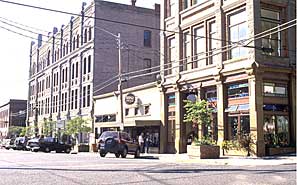
This document contains a sampling of common problems shared by city governments of all sizes that have been identified through the Department of Justice’s ongoing enforcement efforts. The document provides examples of common deficiencies and explains how these problems affect persons with disabilities. The document is not intended to be comprehensive or exhaustive.
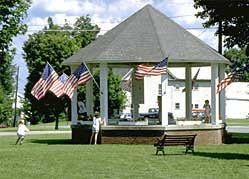
For additional information about the Americans with Disabilities Act’s Title II requirements, please contact the Department of Justice ADA Information Line. This free service provides answers to general and technical questions about ADA requirements and free ADA documents, such as Commonly Asked Questions about Title II of the Americans with Disabilities Act (ADA), Commonly Asked Questions about the Americans with Disabilities Act and Law Enforcement, Access for 9-1-1 and Telephone Emergency Services, the ADA Guide for Small Towns, and the ADA Standards for Accessible Design. You may reach the ADA Information Line at 800-514-0301 (voice) or 833-610-1264 (TTY)
ADA information is also available on the Department’s ADA Home Page at www.ADA.gov
Issue: “Grandfather” Clause or Small Entity Exemption
Common Problem:
City governments may believe that their existing programs and facilities are protected by a “grandfather” clause from having to comply with the requirements of Title II of the ADA. Small municipalities may also believe that they are exempt from complying with Title II because of their size.
Result:
Because city governments wrongly believe that a “grandfather” clause or a small entity exemption shields them from complying with Title II of the ADA, they fail to take steps to provide program access or to make modifications to policies, practices, and procedures that are required by law. People with disabilities are unable to gain access to city facilities, programs, services, or activities because of a public entity’s reliance on these common misconceptions.
Requirement:
There is no “grandfather” clause in the ADA. However, the law is flexible. City governments must comply with Title II of the ADA, and must provide program access for people with disabilities to the whole range of city services and programs. In providing program access city governments are not required to take any action that would result in a fundamental alteration to the nature of the service, program, or activity in question or that would result in undue financial and administrative burdens. This determination can only be made by the head of the public entity or a designee and must be accompanied by a written statement of the reasons for reaching that conclusion. The determination that undue burden would result must be based on all resources available for use in a program. If an action would result in such an alteration or such burdens, a city government must take any other action that it can to ensure that people with disabilities receive the benefits and services of the program or activity. 28 C.F.R. § 35.150(a)(3).
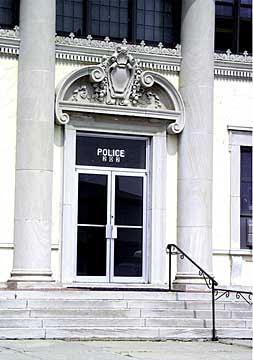
Similarly, there is no exemption from Title II requirements for small municipalities. While public entities that have less than 50 employees are not required to comply with limited sections of the Department of Justice’s regulations, such as maintaining self- evaluations on file for three years and designating a grievance procedure for ADA complaints, no general exemption applies. All public entities, regardless of size, must comply with Title II’s requirements. 28 C.F.R. § 35.102(a).
Issue: Program Accessibility
Common Problem:
City governments often have failed to ensure that the whole range of the city’s services, municipal buildings, and programs meet Title II’s program access requirements.
Result:
People with disabilities are unable to participate in the activities of city government, such as public meetings, unable to attend city functions, and unable to gain access to the city’s various programs and services. If a municipal building such as a courthouse is inaccessible, people with disabilities who use wheelchairs are unable to participate in jury duty, attend hearings, and gain access to other services, because doorways are too narrow, restroom facilities are inaccessible, and steps are the only way to get to all or portions of a facility.
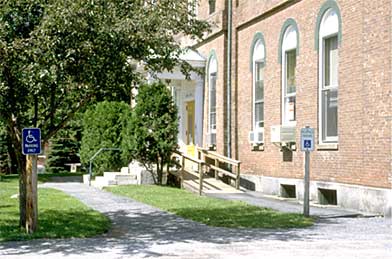
Requirement:
Title II requires city governments to ensure that all of their programs, services, and activities, when viewed in their entirety, are accessible to people with disabilities. Program access is intended to remove physical barriers to city services, programs, and activities, but it generally does not require that a city government make each facility, or each part of a facility, accessible. For example, each restroom in a facility need not be made accessible. However, signage directing people with disabilities to the accessible features and spaces in a facility should be provided. Program accessibility may be achieved in a variety of ways. City governments may choose to make structural changes to existing facilities to achieve access. But city governments can also pursue alternatives to structural changes to achieve program accessibility. For example, city governments can move public meetings to accessible buildings and can relocate services for individuals with disabilities to accessible levels or parts of buildings. When choosing between possible methods of program accessibility, however, city governments must give priority to the choices that offer services, programs, and activities in the most integrated setting appropriate. In addition, all newly constructed city facilities must be fully accessible to people with disabilities. 28 C.F.R. §§ 35.149, 35.150, 35.151, 35.163.
Issue: Historically Significant Facilities
Common Problem:
City governments may believe that they have no duty to make changes to historically significant buildings and facilities to improve accessibility for people with disabilities.
Result:
Many city programs, services, and activities are conducted in buildings that are historically significant. In addition, many cities operate historic preservation programs at historic sites for educational and cultural purposes. If no accessibility changes are made at these facilities and locations, individuals with disabilities are unable to visit and participate in the programs offered. For example, people who use wheelchairs would not be able to reach the courtroom or clerk’s office located in a historic nineteenth century courthouse if no physical changes are made to achieve access.
Requirement:
Historically significant facilities are those facilities or properties that are listed or eligible for listing in the National Register of Historic Places or properties designated as historic under State or local law. Structural changes to these facilities that would threaten or destroy the historical significance of the property or would fundamentally change the program being offered at the historic facility need not be undertaken. Nevertheless, a city must consider alternatives to structural changes in these instances – including using audio-visual materials to depict the inaccessible portions of the facility and other innovative solutions.

If alterations are being made to a historically significant property, these changes must be made in conformance with the 2010 ADA Standards for Accessible Design (the “2010 ADA Standards”) to the maximum extent feasible. If following the 2010 ADA Standards would threaten or destroy the historical significance of the property, alternative standards, which provide a minimal level of access, may be used. 28 C.F.R. §§ 35.150(b)(3); 35.151(b)(3). This decision must be made in consultation with the appropriate historic advisory board designated in the Standards. 2010 ADA Standards § 202.5. If these lesser standards would threaten or destroy historically significant features, then the programs or services conducted in the facility must be offered in an alternative accessible manner or location.
Issue: Curb Ramps
Common Problem: City governments often do not provide necessary curb ramps to ensure that people with disabilities can travel throughout the city in a safe and convenient manner.
Result:
Without the required curb ramps, sidewalk travel in urban areas is dangerous, difficult, and in some cases impossible for people who use wheelchairs, scooters, and other mobility aids. Curb ramps allow people with mobility impairments to gain access to the sidewalks and to pass through center islands in streets. Otherwise, these individuals are forced to travel in streets and roadways and are put in danger or are prevented from reaching their destination.
Requirement:
When streets and roads are newly built or altered, they must have ramps wherever there are curbs or other barriers to entry from a pedestrian walkway. Likewise, when new sidewalks or walkways are built or altered, they must contain curb ramps or sloped areas wherever they intersect with streets or roads. While resurfacing a street or sidewalk is considered an alteration for these purposes, filling in potholes alone will not trigger the alterations requirements. At existing roads and sidewalks that have not been altered, however, city governments may choose to construct curb ramps at every point where a pedestrian walkway intersects a curb, but they are not necessarily required to do so. Under program access, alternative routes to buildings that make use of existing curb ramps may be acceptable where people with disabilities must only travel a marginally longer route.
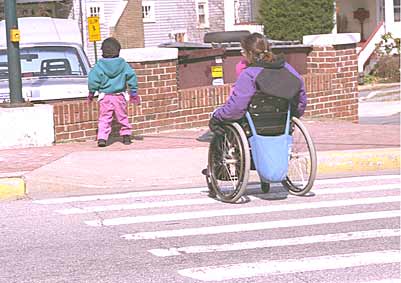
One way to ensure the proper integration of curb ramps throughout a city is to set a series of milestones for curb ramp compliance in the city’s transition plan. Milestones are progress dates for meeting curb ramp compliance throughout the municipality. Milestones should occur on a regular basis throughout the course of the transition plan and must reflect a priority to walkways serving government buildings and facilities, bus stops and other transportation services, places of public accommodation, and business districts, followed by walkways serving residential areas. It also may be appropriate for a city government to establish an ongoing procedure for installing curb ramps upon request in both residential and nonresidential areas frequented by individuals with disabilities. 28 C.F.R. §§ 35.150(d)(2); 35.151(e). In setting milestones and in implementing a curb cut transition plan for existing sidewalks, the actual number of curb cuts installed in any given year may be limited by the fundamental alteration and undue burden limitations.
Issue: Effective Communication
Common Problem:
City governments often fail to provide qualified interpreters or assistive listening devices for individuals who are deaf or hard of hearing at public events or meetings. In addition, city governments often fail to provide materials in alternate formats (Braille, large print, or audio cassettes) to individuals who are blind or have low vision.
Result:
Individuals who are deaf or hard of hearing are unable to participate in government- sponsored events or public meetings and unable to benefit from city programs and services when they are not provided with appropriate auxiliary aids and services. Likewise, people who are blind or have low vision are unable to benefit from city government services when printed materials are the only means of communication available.
Requirement: Title II requires that city governments ensure that communications with individuals with disabilities are as effective as communications with others. Thus, city governments must provide appropriate auxiliary aids and services for people with disabilities (e.g., qualified interpreters, notetakers, computer-aided transcription services, assistive listening systems, written materials, audio recordings, large print, and Brailled materials) to ensure that individuals with disabilities will be able to participate in the range of city services and programs. City governments must give primary consideration to the type of auxiliary aid or service that an individual with a disability requests. The final decision is the government’s.
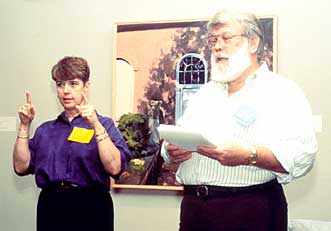
The type of auxiliary aid or service necessary to ensure effective communication will vary in accordance with the length and complexity of the communication involved and the needs of the individual. For example, sign language interpreters are not required for all interactions with people who are deaf or hard of hearing. Employees can often communicate effectively with individuals who are deaf or hard of hearing through standard written materials and exchange of written notes. For simple transactions like paying bills or filing applications, these methods may be sufficient. For more complex or extensive communications, however, such as court hearings, public meetings, and interrogation by police officers, interpreters or assistive listening systems are likely to be necessary.
City governments should ensure that auxiliary aids and services are also provided for individuals who are blind or have low vision. Alternate formats, such as Brailled or large print materials, qualified readers, or audio recordings are examples of appropriate auxiliary aids.
City governments are not required to take any actions that will result in a fundamental alteration or in undue financial and administrative burdens. 28 C.F.R. §§ 35.160-35.164.
Issue: Local Laws, Ordinances, and Regulations
Common Problem:
City governments may fail to consider reasonable modifications in local laws, ordinances, and regulations that would avoid discrimination against individuals with disabilities.
Result:
Laws, ordinances, and regulations that appear to be neutral often adversely impact individuals with disabilities. For example, where a municipal zoning ordinance requires a set-back of 12 feet from the curb in the central business district, installing a ramp to ensure access for people who use wheelchairs may be impermissible without a variance from the city. People with disabilities are therefore unable to gain access to businesses in the city.
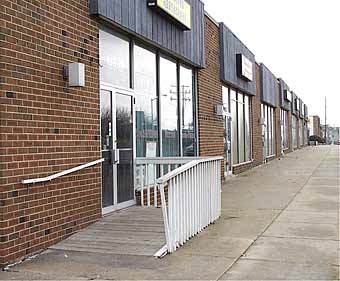
Requirement:
City governments are required to make reasonable modifications to policies, practices, or procedures to prevent discrimination on the basis of disability. Reasonable modifications can include modifications to local laws, ordinances, and regulations that adversely impact people with disabilities. For example, it may be a reasonable modification to grant a variance for zoning requirements and setbacks. In addition, city governments may consider granting exceptions to the enforcement of certain laws as a form of reasonable modification. For example, a municipal ordinance banning animals from city health clinics may need to be modified to allow a blind individual who uses a service animal to bring the animal to a mental health counseling session. 28 C.F.R. §§ 35.130(b)(7) and 35.136.
Issue: 9-1-1 Systems
Common Problem:
City governments do not provide direct and equal access to 9-1-1 systems, or similar emergency response systems, for individuals who are deaf or hard of hearing and use TTY’s (TDD’s or text telephones ) or computer modems.
Result:
People who are deaf or hard of hearing, or those who have speech impairments, and use TTY’s or computer modems for telephone communication are unable to access emergency services (police, fire and ambulance) that are necessary for health and safety. When direct emergency services are not available, emergency calls for individuals with disabilities are not responded to appropriately, or in a timely manner, and in some instances, not at all.
Requirement:
City governments that provide emergency telephone services must provide direct access to TTY calls. This means that emergency telephone services can directly receive calls from TTY’s and computer modem users without relying on state relay services or third parties. City governments must ensure that emergency operators are trained to use the TTY not only when they recognize the tones of a TTY at the other end of the line, but also when they receive a “silent call.” 28 C.F.R. §§ 35.161, 35.162. (See Access for 9-1-1 and Telephone Emergency Services)
Issue: Law Enforcement Policies, Practices, and Procedures
Common Problem:
When dealing with persons with disabilities, law enforcement agencies often fail to modify policies, practices, or procedures in a variety of law enforcement settings – including citizen interaction, detention, and arrest procedures.
Result:
When interacting with police and other law enforcement officers, people with disabilities are often placed in unsafe situations or are unable to communicate with officers because standard police practices and policies are not appropriately modified. For example, individuals who are deaf or have hearing impairments and use sign language may be unable to communicate with law enforcement officers if they are taken into custody and handcuffed behind their backs. Similarly, individuals with epilepsy or diabetes may be placed at great risk if they are not permitted access to their medications.
Requirement:
Title II of the ADA requires law enforcement agencies to make reasonable modifications in their policies, practices, or procedures that are necessary to ensure accessibility for individuals with disabilities, unless making such modifications would fundamentally alter the program or service involved. Law enforcement officers should be prepared to make reasonable modifications, for example, by allowing, in appropriate circumstances, arrestees who are deaf to be handcuffed in front of their bodies so that they can communicate with others and by allowing detainees access to their medication. 28 C.F.R. § 35.150(b)(7). (See Commonly Asked Questions about the Americans with Disabilities Act and Law Enforcement)
Issue: Self-Evaluation and Transition Plans
Common Problem:
City governments often have not conducted thorough self-evaluations of their current facilities, programs, policies, and practices to determine what changes are necessary to meet the ADA’s requirements, and have not developed transition plans to implement these changes.
Result:
When self-evaluations are not conducted and transition plans not developed, city governments are ill-equipped to implement accessibility changes required by the ADA. Without a complete assessment of a city’s various facilities, services, and programs, it is difficult to plan or budget for necessary changes, and the city can only react to problems rather than anticipate and correct them in advance. As a result, people with disabilities cannot participate in or benefit from the city’s services, programs, and activities.
Requirement:
All city governments were required to complete a self-evaluation of their facilities, programs, policies, and practices by January 26, 1993. The self-evaluation identifies and corrects those policies and practices that are inconsistent with Title II’s requirements. Self-evaluations should consider all of a city’s programs, activities, and services, as well as the policies and practices that a city has put in place to implement its various programs and services. Remedial measures necessary to bring the programs, policies, and services into compliance with Title II should be specified – including, but not limited to: (1) relocation of programs to accessible facilities; (2) offering programs in an alternative accessible manner; (3) structural changes to provide program access; (4) policy modifications to ensure nondiscrimination; and (5) auxiliary aids needed to provide effective communication.
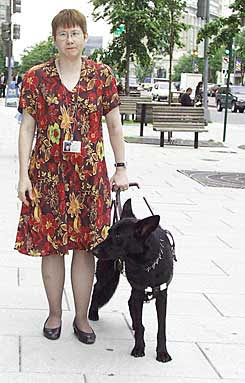
If a city that employs 50 or more persons decided to make structural changes to achieve program access, it was required to develop a transition plan that identifies those changes and sets a schedule for implementing them. Transition plans must be available to the public. 28 C.F.R. § 35.150(d).
The Americans with Disabilities Act authorizes the Department of Justice (the Department) to provide technical assistance to individuals and entities that have rights or responsibilities under the Act. This document provides informal guidance to assist you in understanding the ADA and the Department’s regulations.
This guidance document is not intended to be a final agency action, has no legally binding effect, and may be rescinded or modified in the Department’s complete discretion, in accordance with applicable laws. The Department’s guidance documents, including this guidance, do not establish legally enforceable responsibilities beyond what is required by the terms of the applicable statutes, regulations, or binding judicial precedent.
Originally issued:
Last updated:


